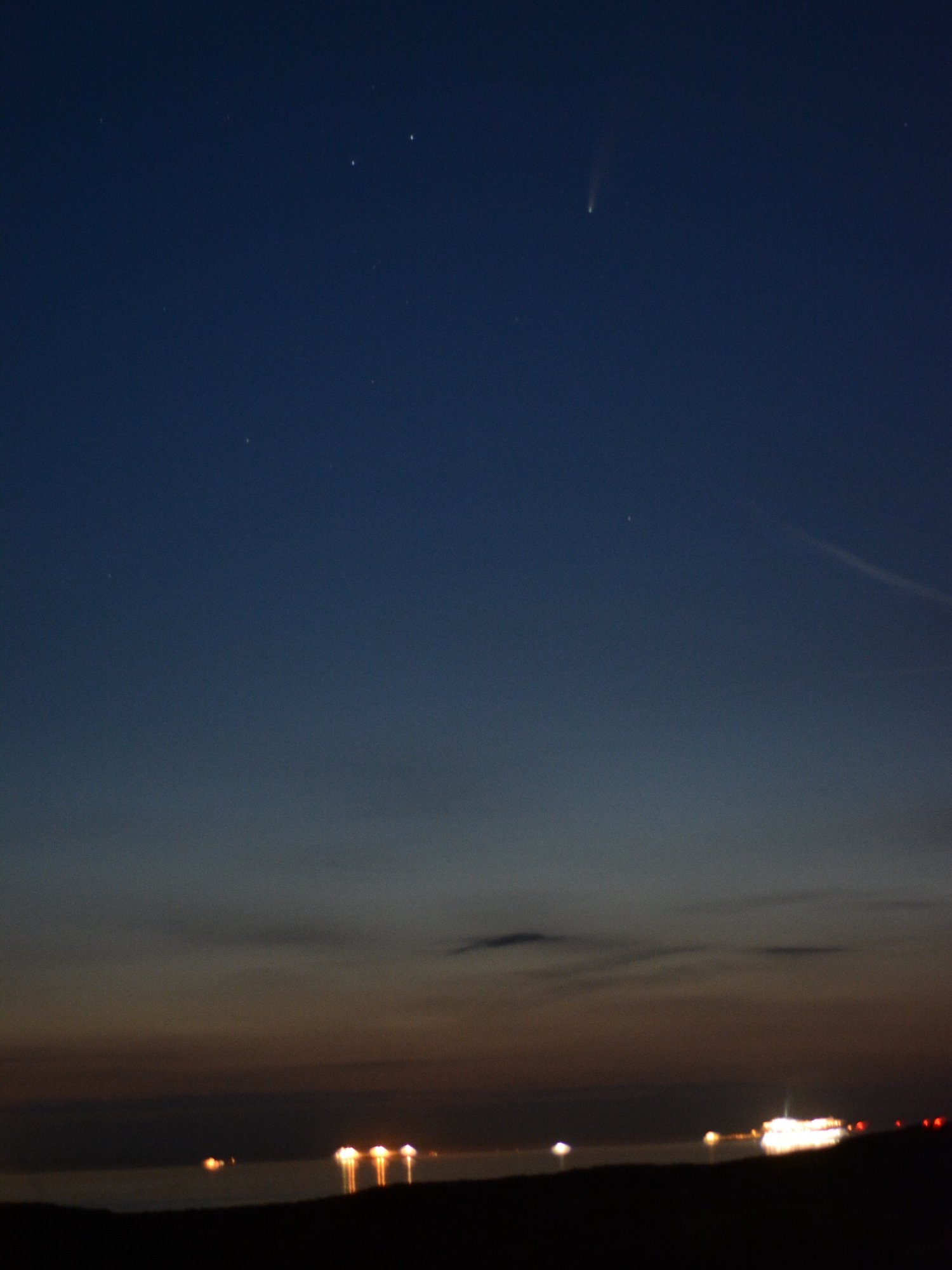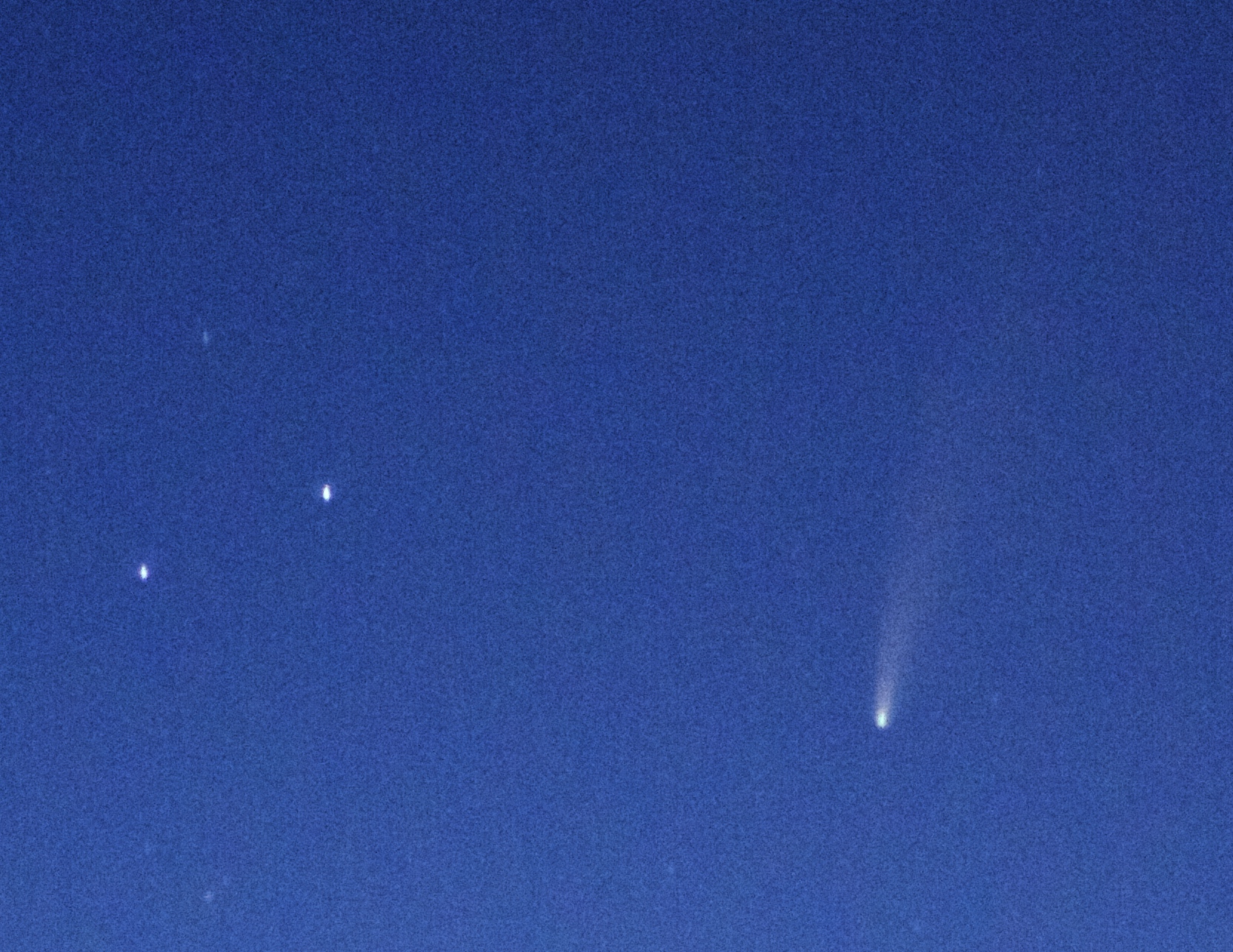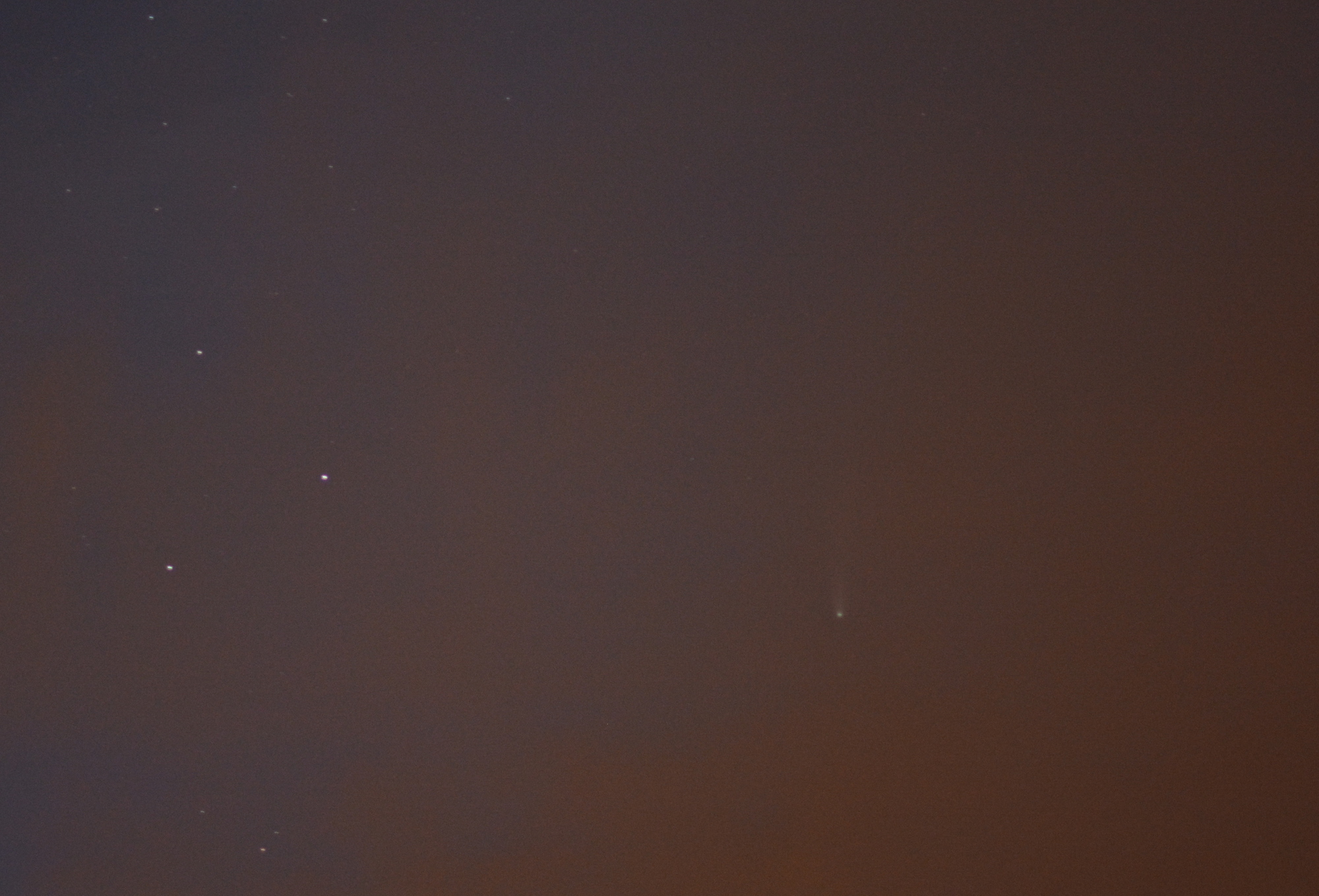Comet hunting (posted 2020-07-18)
Earlier this week, I read that there's a comet that's visible. It's called C/2020 F3 (NEOWISE), but I'll call it Neowise for short, after the space telescope that found it.
Yesterday, I went out to see and photograph the comet. I arrived at the largest dune north of the city, where there were some other comet hunters as well. In mid summer it takes a long time for it to get dark, and there was some cloud cover at the horizon, so I was afraid the comet would disappear behind the clouds before it would be dark enough to see it. Finally, close to midnight I got a first few shots of the comet. This is the best one:

This is with a 50 mm lens at f/1.8, half a second exposure, ISO 1600. This is from the same shot with some processing:

The comet was higher in the sky than I had expected, so I was hoping to get a better view and better shots later when it was darker, but unfortunately a little later clouds started moving in:

This is 8 seconds with a 105 mm manual focus macro lens at f/2.8, ISO 1000.
The comet was on the edge of visibility with the naked eye, but it looked just like a faint star, I didn't see the tail.
Some lessons learned about the photography part of the expedition:
- Don't forget your tripod. But if you do, a sweater can be a makeshift bean bag.
- Older lenses that have a "hard infinity stop" are helpful. With these you just use manual focus and turn the focus in the far away direction until the focus ring won't turn anymore, and you're focussed at infinity. Focussing manually zooming in with live view is a bit sharper, but very tricky without something relatively bright to focus on.
- You really need a fast lens, because you can't expose for much longer than 500 / focal length before the stars are no longer dots but turn into stripes due to the rotation of the earth.
- 50 and 105 mm seemed good choices for my Nikon D7100 with a crop factor of 1.5. 50 allows for some foreground, 105 could still have shown the entire tail with better visibility.
- You can't judge exposure on the camera's LCD screen because the screen is bright in the dark, under the light of day the photos will look underexposed.
I'm going to retry at least once over the next few days if the weather is clear, but the comet will be getting dimmer...
